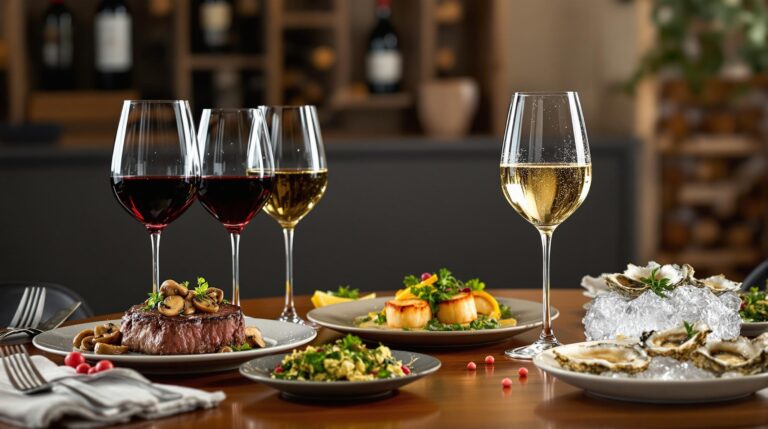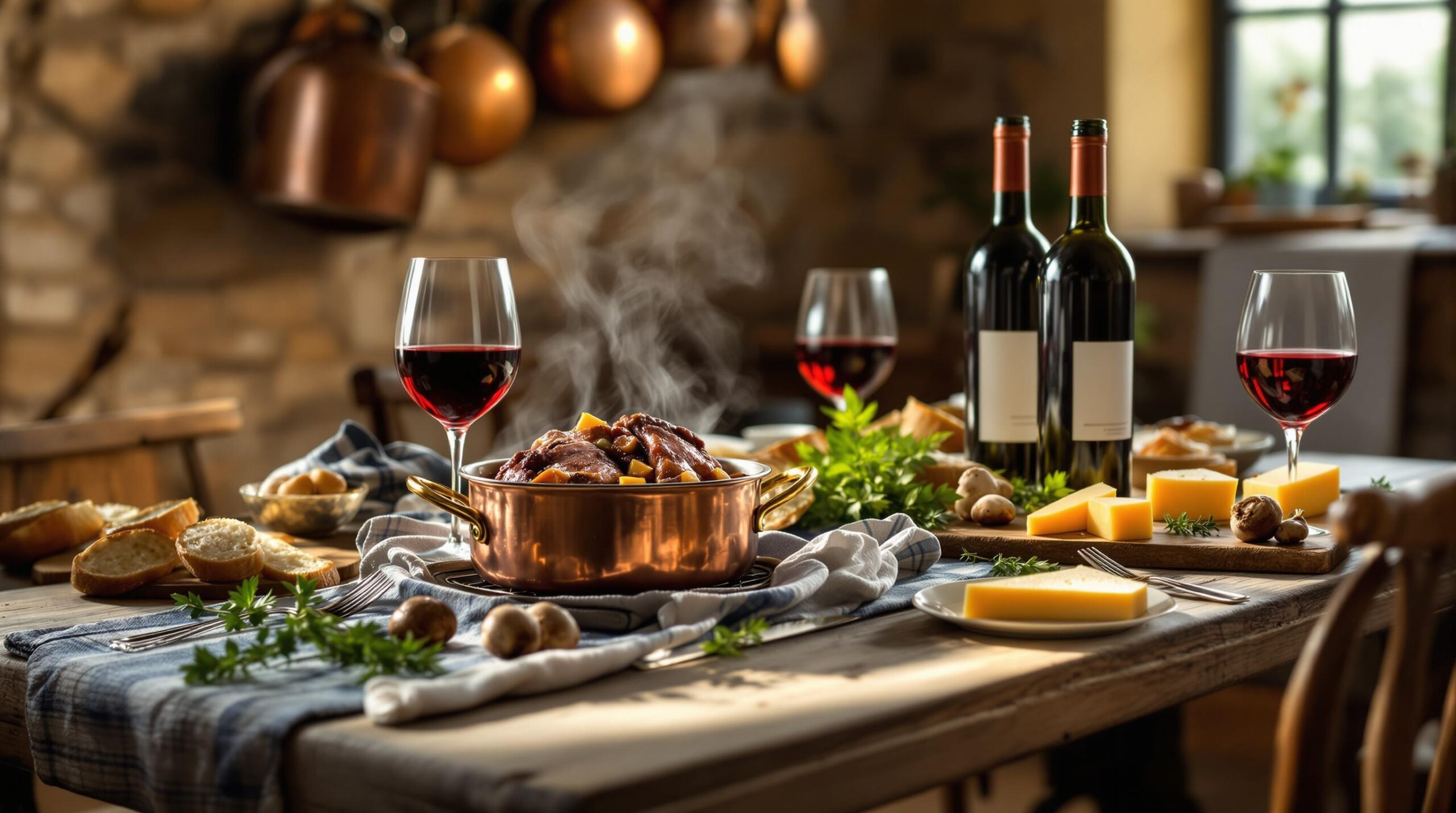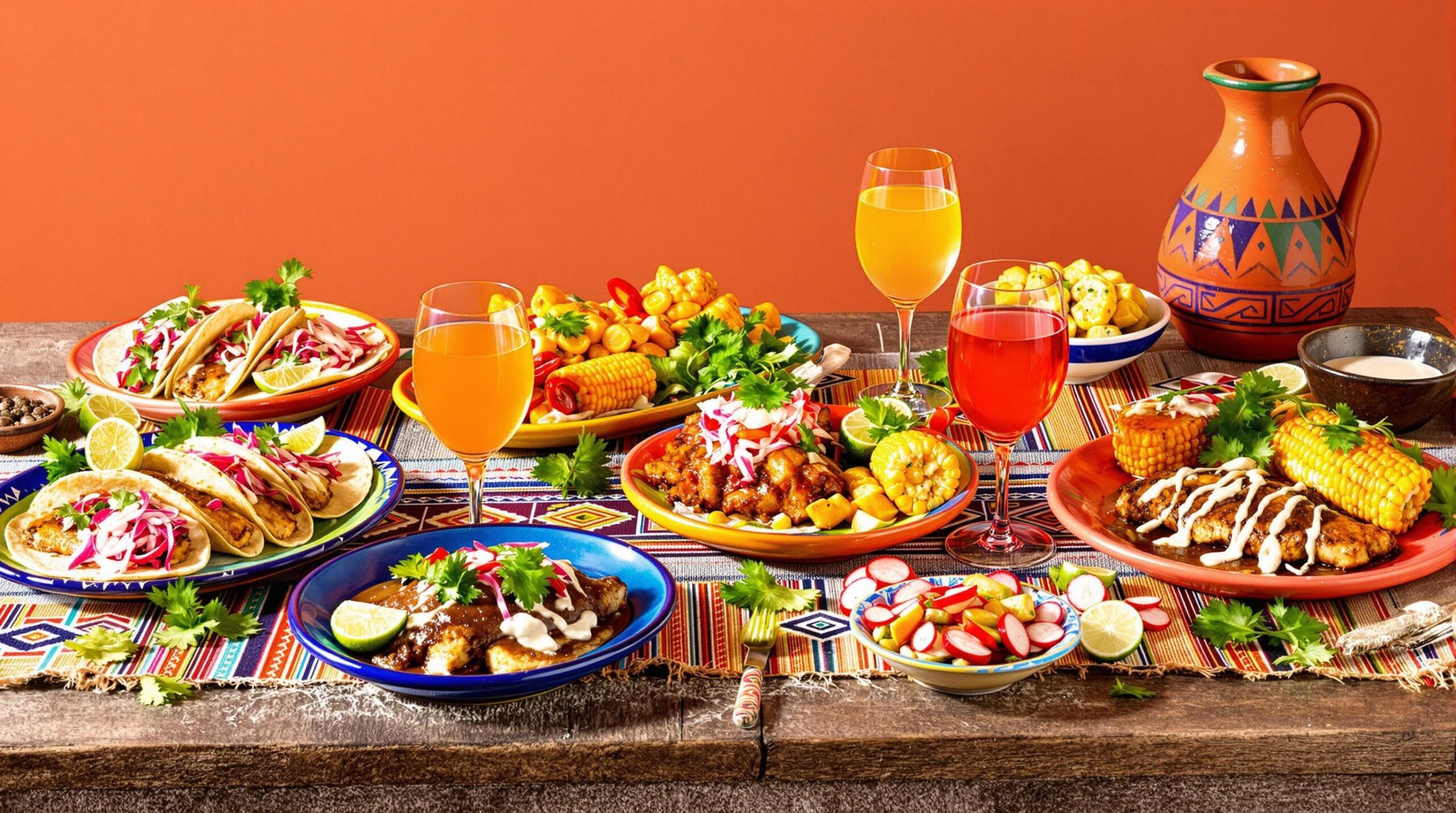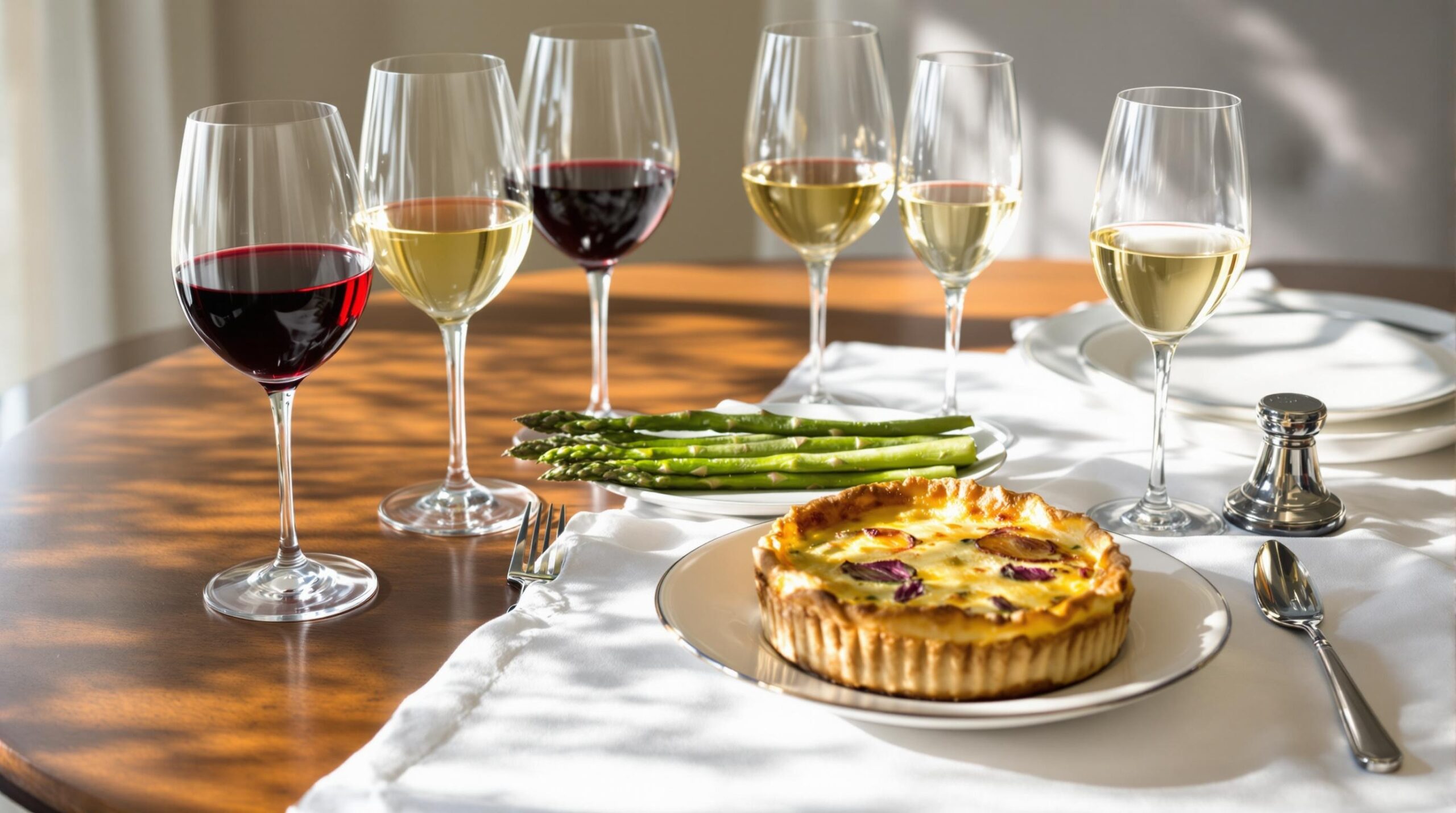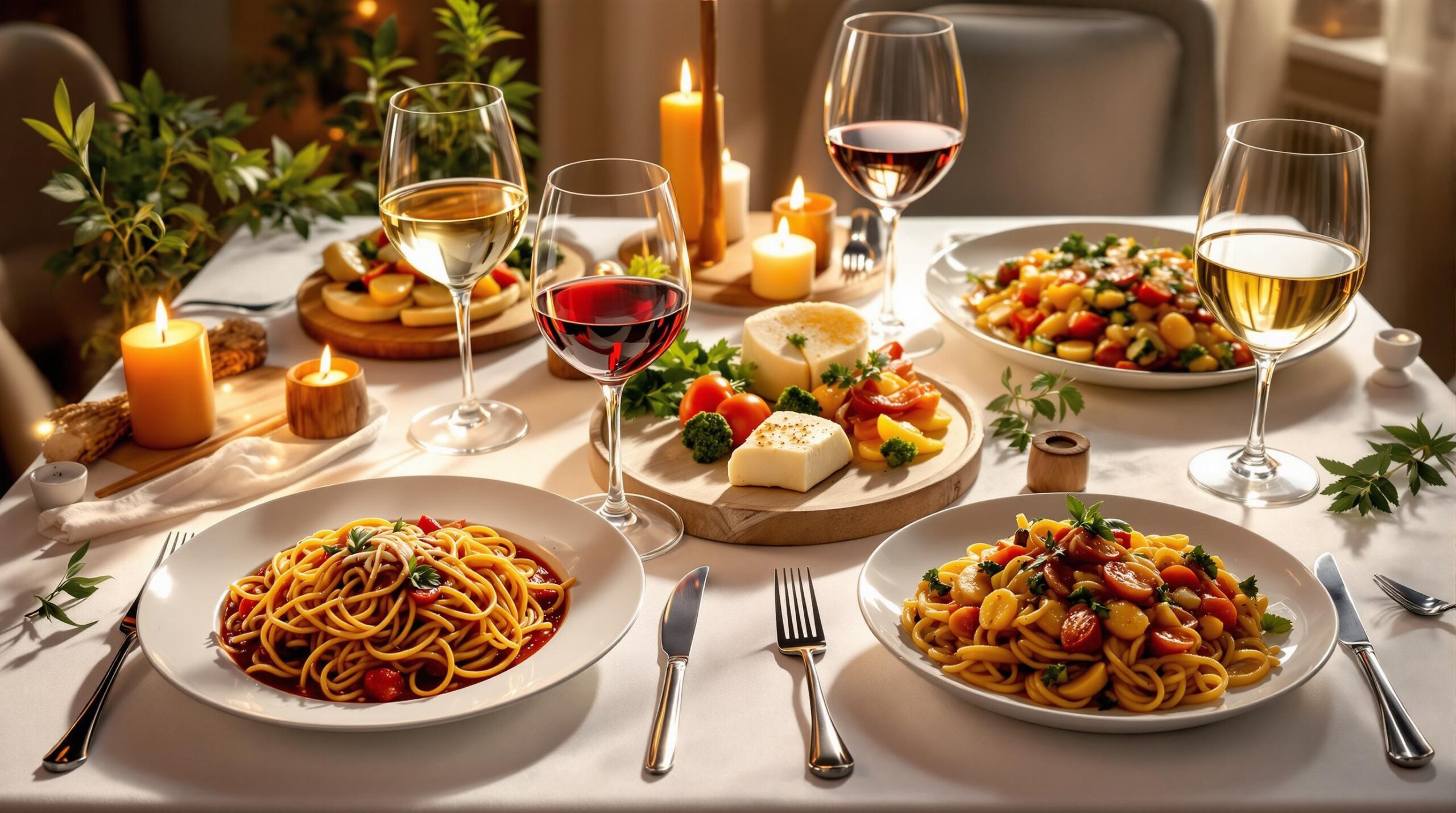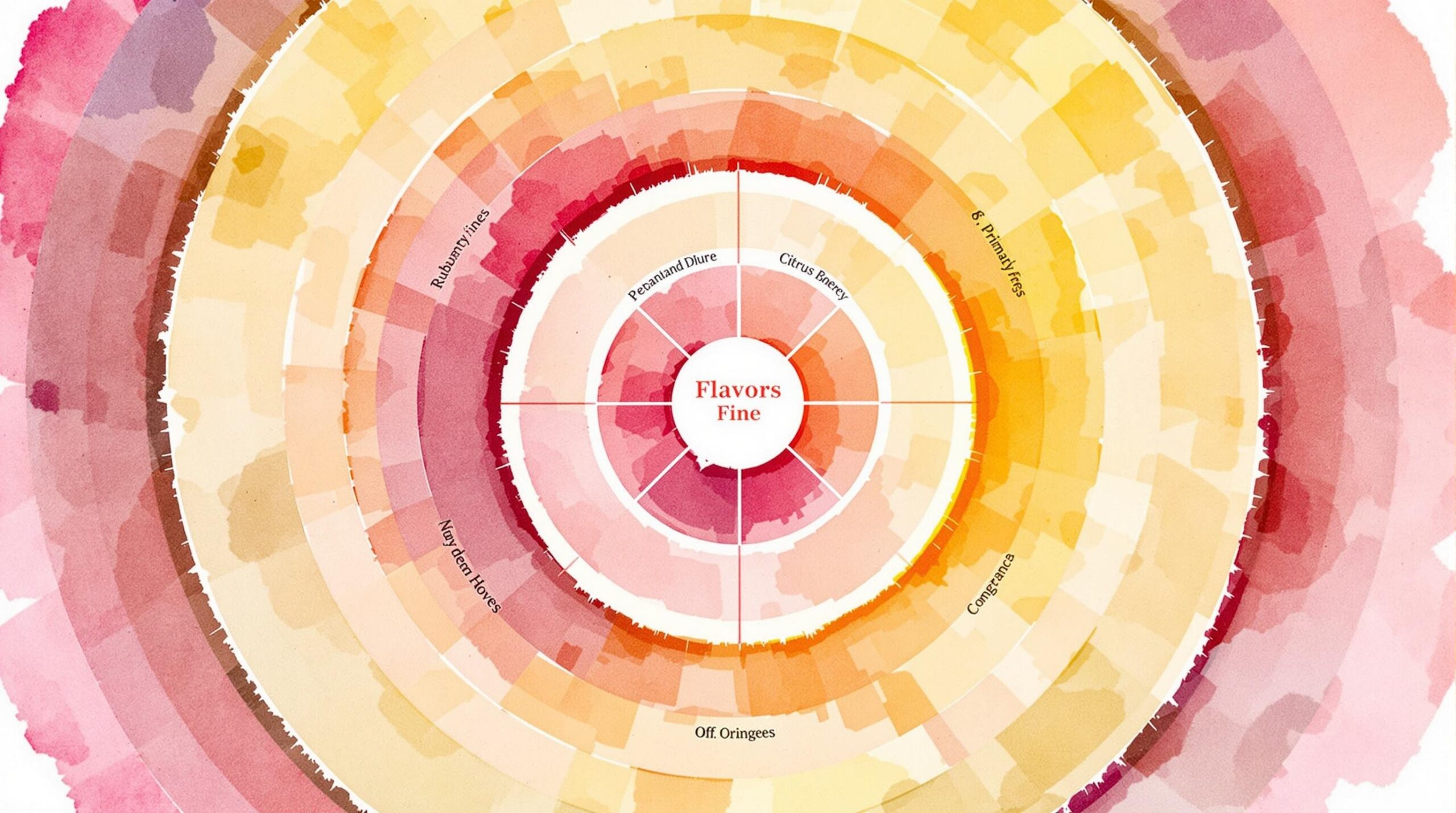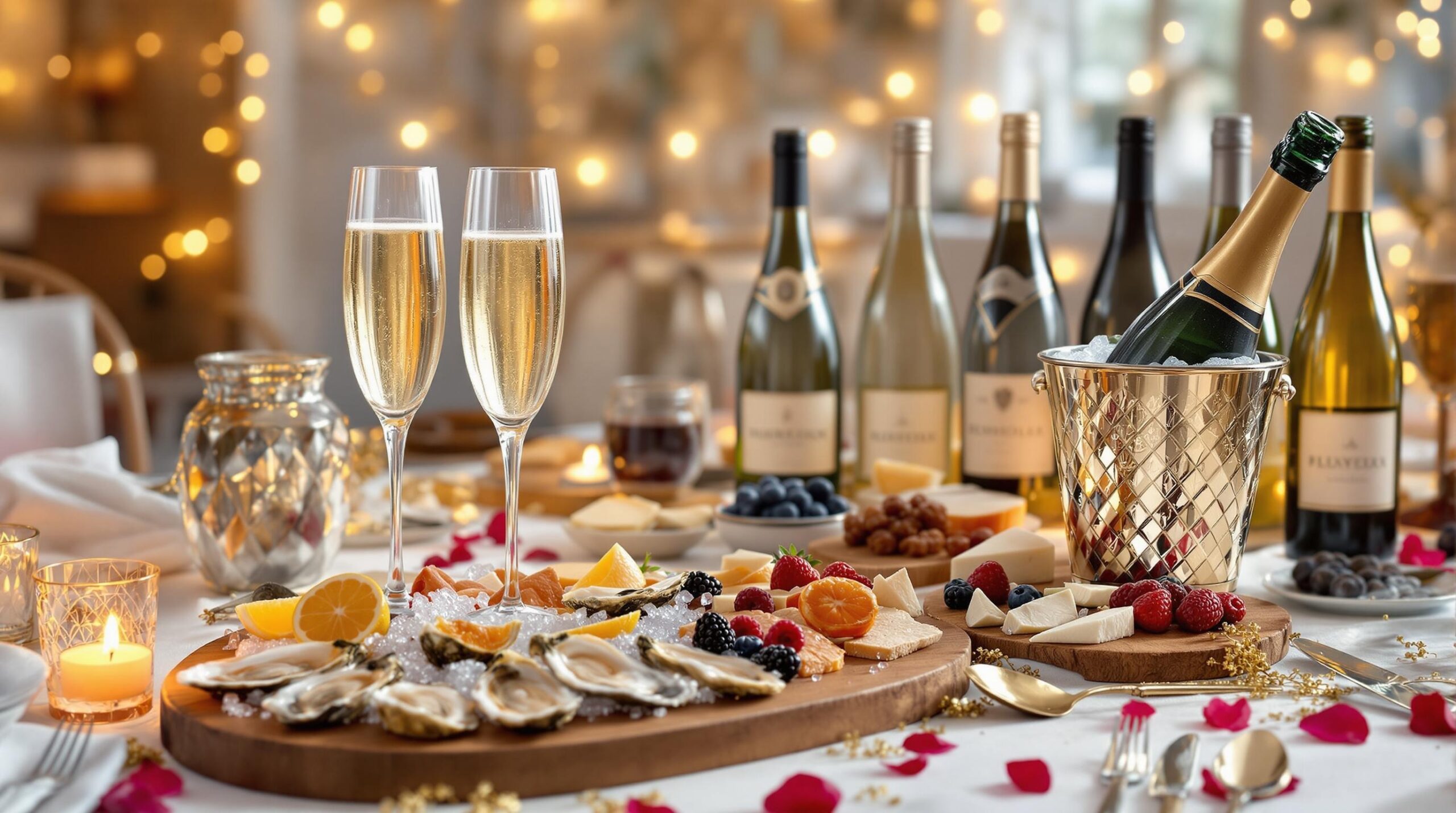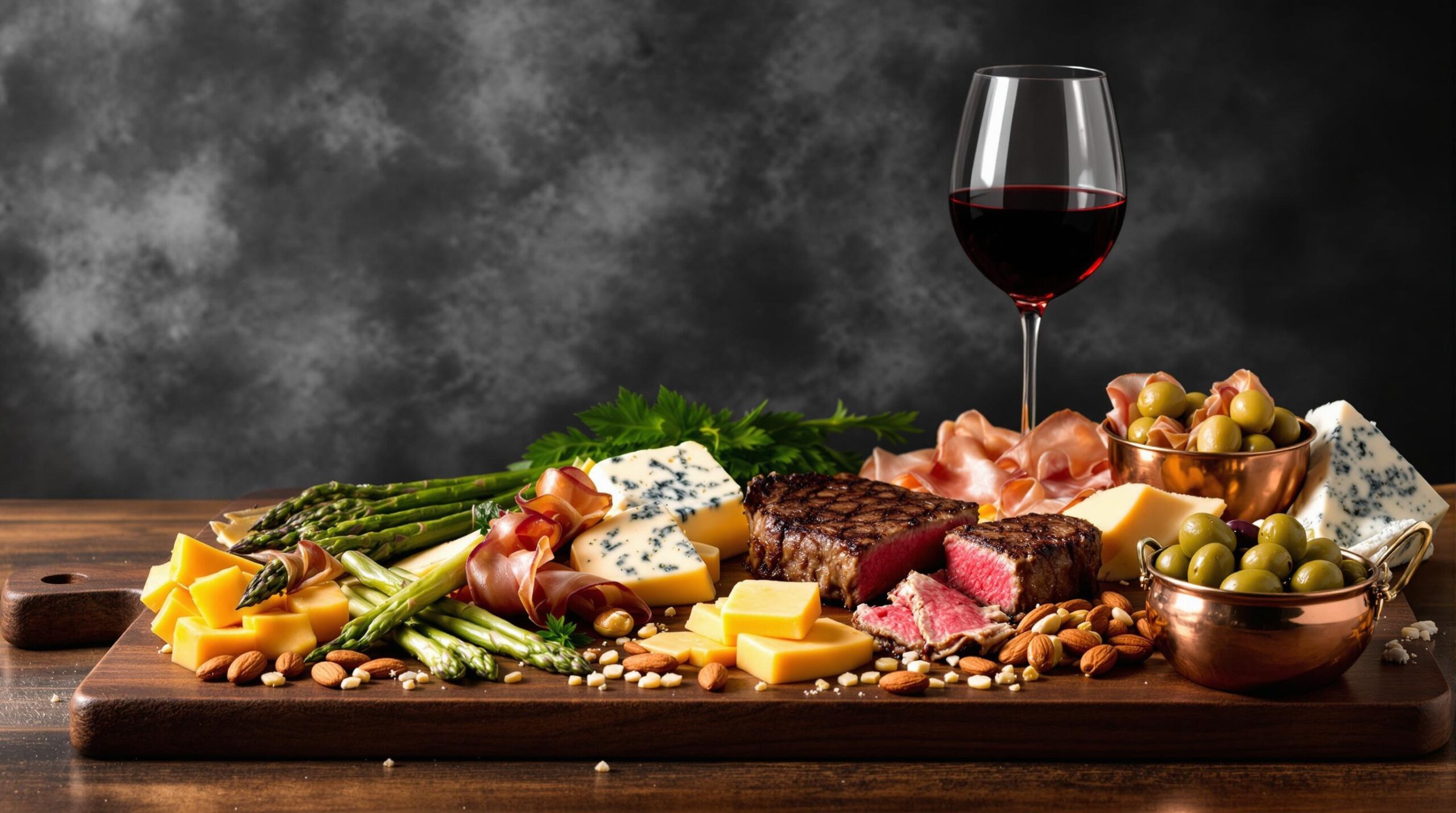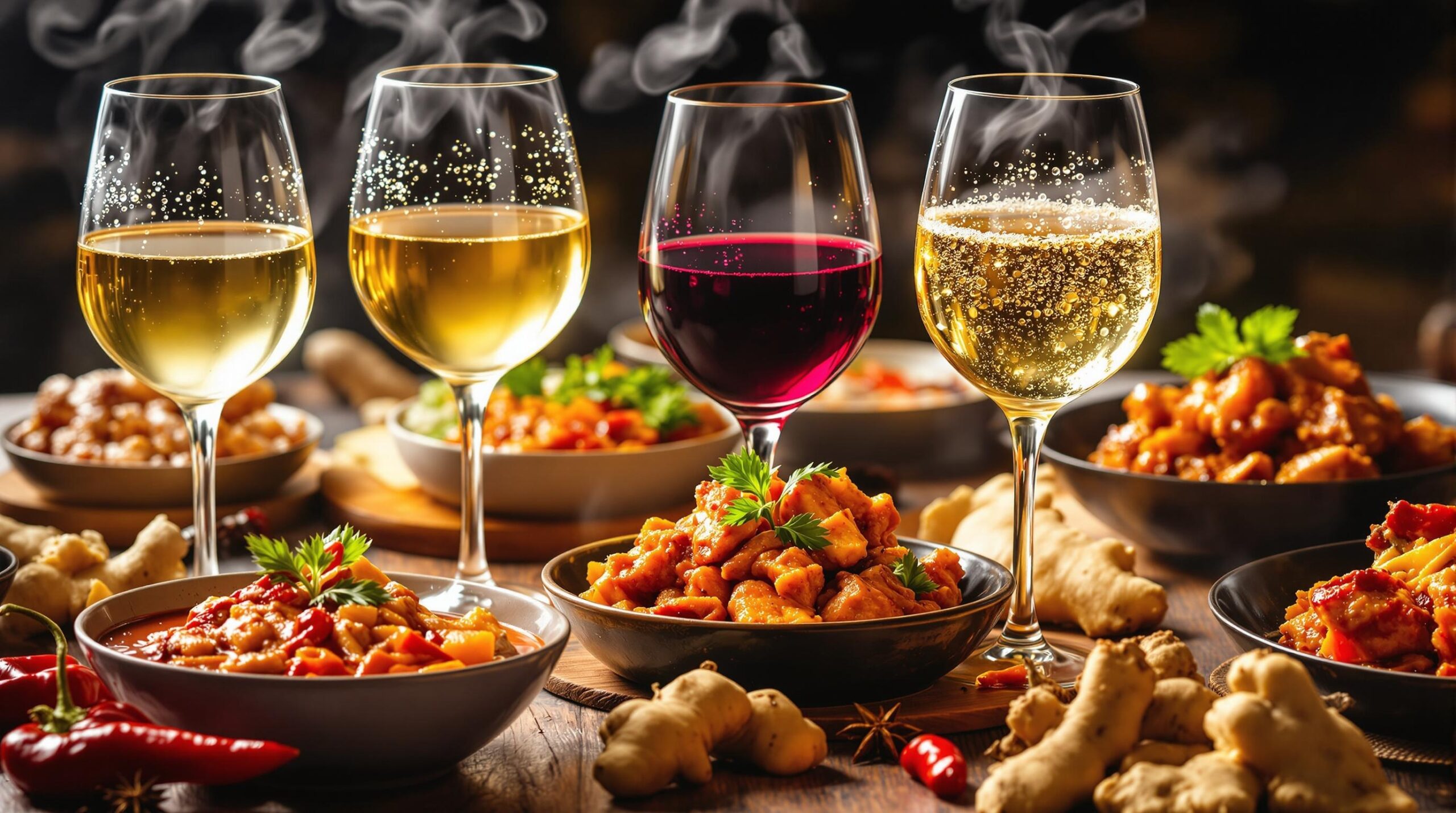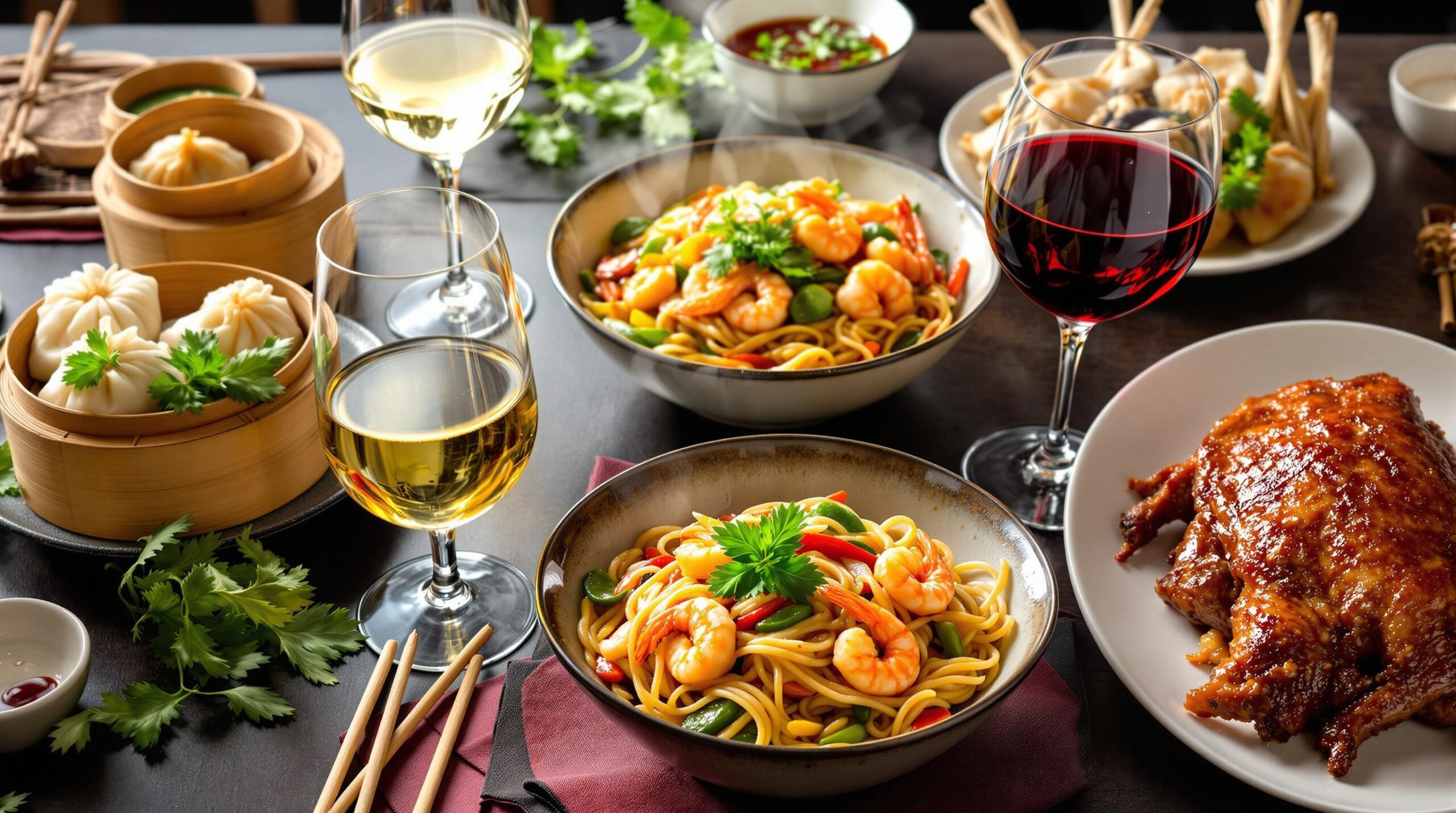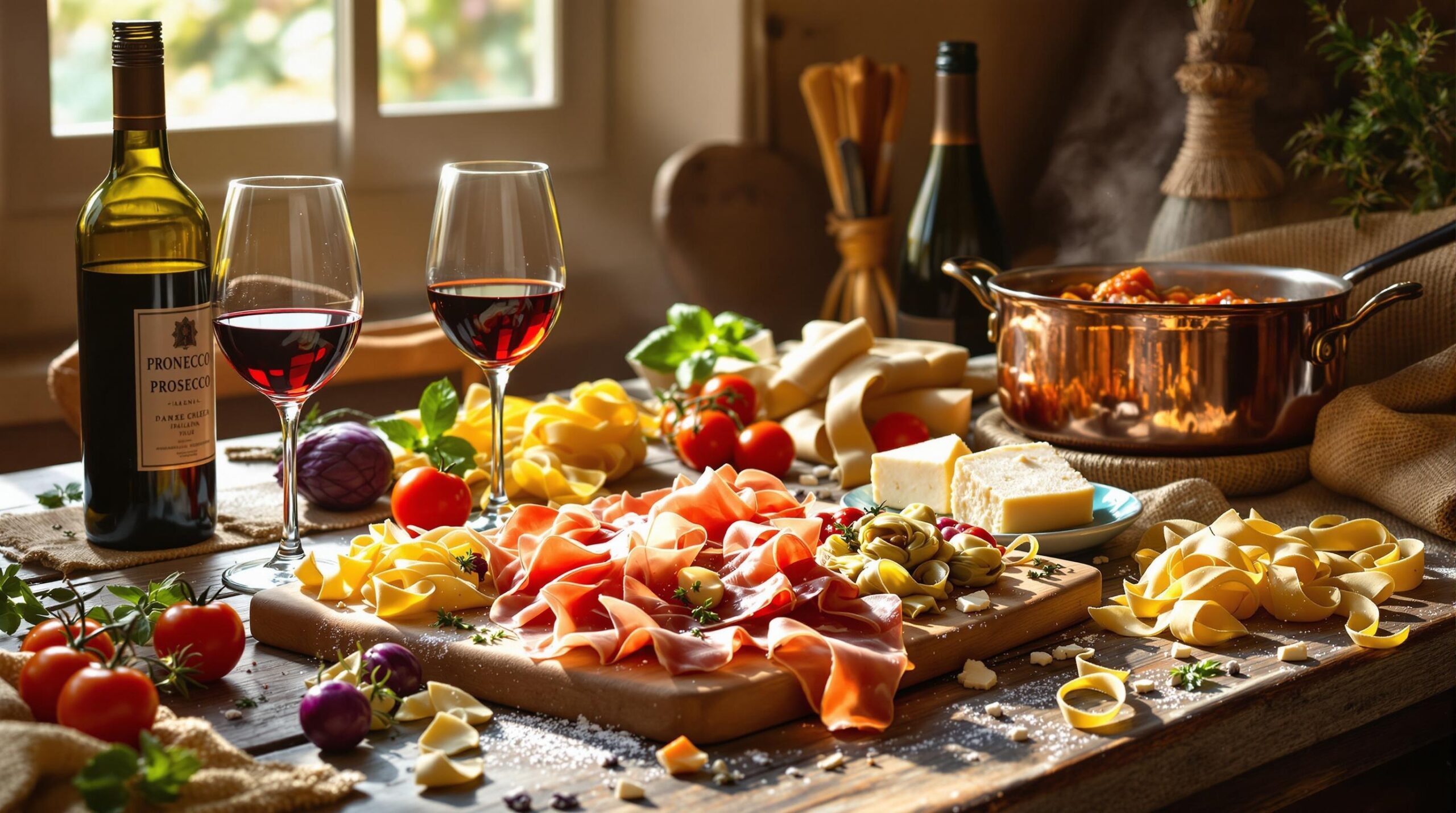Wine and food pairing transforms everyday meals into memorable dining experiences. This quick guide helps both beginners and experienced home cooks master basic pairing principles.
Basic Principles of Food and Wine Matching
Balance stands as the foundation of successful pairings. Light wines complement lighter dishes, while fuller-bodied wines match heartier foods.
- Match food weight with wine weight
- Consider acidity levels in both wine and food
- Balance sweetness between dish and wine
- Account for fat content in foods
Quick Reference Table: Wine Body vs. Food Weight
| Wine Body | Food Examples |
|---|---|
| Light (Pinot Grigio) | Salads, seafood, light pasta |
| Medium (Chardonnay) | Poultry, cream sauces, mushrooms |
| Full (Cabernet) | Red meats, rich stews, aged cheeses |
Regional Wine and Food Combinations
Traditional regional pairings offer time-tested combinations. Local wines often complement local cuisines naturally.
- Italian: Chianti with tomato-based pasta
- French: Chablis with oysters
- Spanish: Rioja with grilled lamb
- German: Riesling with spicy Asian cuisine
Common Pairing Mistakes to Avoid
Understanding common missteps helps create better matches. Simple adjustments can significantly improve your pairing success.
- Overlooking food seasonings and sauces
- Focusing only on the main protein
- Matching red wine with fish automatically
- Ignoring temperature service for wines
Temperature Guidelines
- Red wines: 60-65°F (16-18°C)
- White wines: 45-50°F (7-10°C)
- Sparkling wines: 42-45°F (6-7°C)
Wine and Food Pairing Tools
Several practical tools help simplify the wine selection process. Modern apps and traditional methods offer reliable guidance for both casual dining and special occasions.
- Digital Tools: Wine apps with pairing databases
- Aroma wheels: Visual guides for flavor matching
- Tasting journals: Track successful combinations
- Temperature gauges: Ensure optimal serving conditions
Building Your Pairing Confidence
Start with proven combinations and gradually experiment with personal preferences. Take notes on successful matches to develop your palate.
Starter Combinations
| Wine Type | Classic Pairing | Modern Alternative |
|---|---|---|
| Sauvignon Blanc | Goat cheese | Asparagus risotto |
| Malbec | Grilled steak | Portobello mushrooms |
| Prosecco | Fresh fruit | Spicy Asian fusion |
Advanced Pairing Techniques
Explore complex flavor combinations once basic principles are mastered. Focus on seasonal ingredients and regional specialties.
- Contrast pairing: Match opposite flavors
- Bridge ingredients: Use sauces to connect wine and food
- Texture matching: Consider mouthfeel of both elements
- Age consideration: Match wine age with food intensity
Making Memorable Matches
Create lasting impressions by considering the complete dining experience. Focus on occasion, season, and guest preferences.
Final Tips for Success
- Trust your personal taste preferences
- Consider the dining occasion
- Keep seasonal availability in mind
- Stock versatile wines for different situations
- Remember food preparation methods matter
Remember: The best pairing is one that brings joy to those sharing the table. Break traditional rules when it enhances your dining experience.
Food and Wine Pairing FAQs
Basic Wine Pairing Questions
- What’s the main rule for pairing wine with food?
Match the weight and intensity of the wine with your food. Light dishes work with light wines, while rich foods need fuller-bodied wines. - Should I always follow “red wine with meat, white wine with fish”?
This rule is outdated. Consider the sauce and preparation method instead. A salmon in cream sauce pairs well with white wine, while one with mushrooms might prefer light red. - How do I pair wine with spicy food?
Choose wines with lower alcohol content and some sweetness, like Riesling or Gewürztraminer. High alcohol intensifies heat sensation. - What wine goes best with cheese?
Soft cheeses pair well with crisp whites like Sauvignon Blanc. Hard aged cheeses match with full-bodied reds like Cabernet Sauvignon. - Can I serve different wines during one meal?
Yes. Progress from lighter to fuller-bodied wines through courses. Start with sparkling wine for appetizers, moving to whites or reds for main courses.
Common Pairing Challenges
- What if my guests prefer different wines?
Offer both red and white options that complement your main dish. A versatile choice is rosé, which pairs with many foods. - How do I pair wine with salads?
Consider the dressing first. Vinaigrette-based salads pair well with high-acid wines like Pinot Grigio. Creamy dressings match with buttery Chardonnay. - What wine works with dessert?
Choose a wine sweeter than your dessert. Port pairs well with chocolate, while Moscato complements fruit-based desserts. - Should I spend a lot on wine for cooking?
Use affordable but drinkable wine for cooking. The rule: if you wouldn’t drink it, don’t cook with it. Save expensive wines for drinking. - How do I fix a bad pairing?
Adjust the food’s seasoning or serve bread to neutralize flavors. For future reference, keep notes on combinations that work or don’t.
Quick Tips for Success
- Start with wines you enjoy drinking
- Consider the dominant flavor in your dish, not just the main ingredient
- Match regional wines with their local cuisines
- Keep sparkling wine on hand – it pairs with almost everything
- Test pairings before important occasions
Recommended Starter Combinations
| Food | Wine |
|---|---|
| Grilled chicken | Chardonnay |
| Pasta with tomato sauce | Chianti |
| Seafood | Pinot Grigio |
| Steak | Cabernet Sauvignon |

